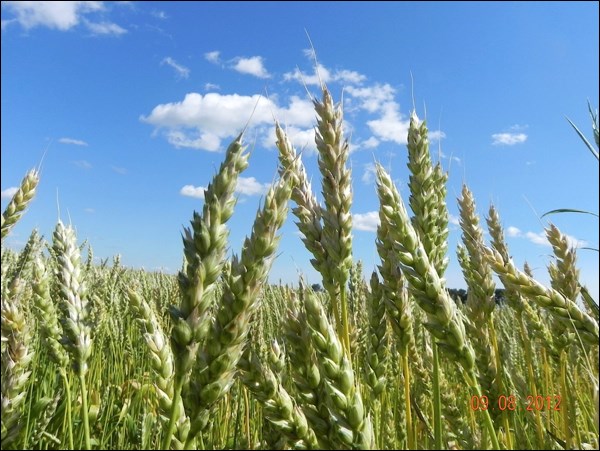Details were announced Monday about the new 2014 Crop Insurance Program.
This year's program offers some new features and improvements, described in detail by provincial agriculture minister Lyle Stewart in a news conference from the Saskatchewan Crop Insurance Corporation offices in Melville.
Improvements include a pilot program to provide yield-loss coverage for corn in the east central and southeast of the province.
Stewart said there had been interest from farmers and ranchers in developing a production insurance program to cover the risks associated with corn. Also, the province saw an increase in 2013 of corn acres grown with 20,000 acres reported to crop insurance, an increase of 46 per cent in a single year.
As a result of the high demand, the pilot program is being brought in with the establishment benefit feature also being expanded to cover corn of $65 an acre.
Also new is that durum and barley will be eligible for yield trending, a feature first introduced in 2009. According to Stewart, it recognizes agronomic advances and increases a producer's historical yields, which improves coverage. Yields for durum will increase 8.6 and barley 3.5 per cent on average.
Yield trending will continue as well for canola, fall rye, winter wheat, hard red spring wheat, hard white spring wheat and oats.
Beekeepers will be interested in a pilot program to be introduced in 2014. There will be a bee mortality insurance pilot program, which will cover the loss of bees in excess of normal losses from natural occurring causes beyond the control of producers.
Stewart noted the program is being introduced in consultation with the beekeepers in the province. He noted the Saskatchewan Beekeepers Association had noted the need for bee mortality insurance over the past few years.
"Although diligent management practices by Saskatchewan beekeepers have helped mitigate losses compared to the national average, the losses are still felt," said Stewart.
Other enhancements include increasing the base grade for flax to a grade of number one, adding field peas to the contract price option and expanding the number of crops eligible for vegetable insurance to include five new crops.
Other crop insurance enhancements from prior years such as the expanded coverage for soybeans, the unseeded acreage benefit and yield cushioning are to continue in 2014.
There will also be a feature introduced to make it easier for producers to conduct business online, called CropConnect.
This will provide crop insurance customers the flexibility of completing their business online from a home computer, laptop or smartphone. The need for a new online tool had been raised in discussions with producers, said Stewart. From the start of the crop season farmers and ranchers can do such tasks online as adding land, filling out endorsements, calculating premiums and coverage, input seeding and production data and file claims.
In addition, past program improvements and enhancements will continue.
Stewart said the continuing changes in crop insurance are part of the government's Plan for Growth encouraging "innovation and investment in the agriculture sector."
"We know that having an efficient crop insurance program that meets the needs of producers is important to ensuring this continues," said Stewart, who noted 2013 was a "tremendous year for the agriculture industry in Saskatchewan thanks to favourable growing season weather and favourable harvest weather for the vast majority of the province, resulting in much above average yields."
Stewart said coverage for 2014 will be the fourth highest in the program's history at $162 per acres. Crop insurance premiums for 2014 will average $7.47 per acre for a 25 per cent reduction from 2013, with the lower coverage and premium largely due to lower forecasted crop prices in 2014-15.
The crop insurance budget is one of the highest in history at $165 million. That compares to $104 million under the previous government, said Stewart.
In speaking to reporters following the announcement, Stewart confirmed there will once again be no ad-hoc AgriRecovery Program for weather-related disasters in 2014 - similar to the past two years.

.png;w=120;h=80;mode=crop)


